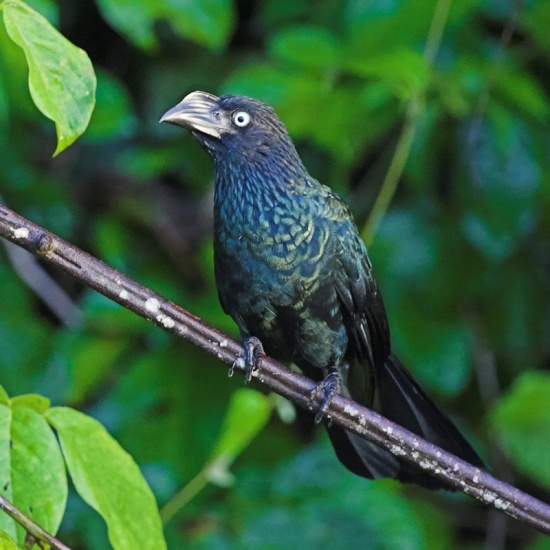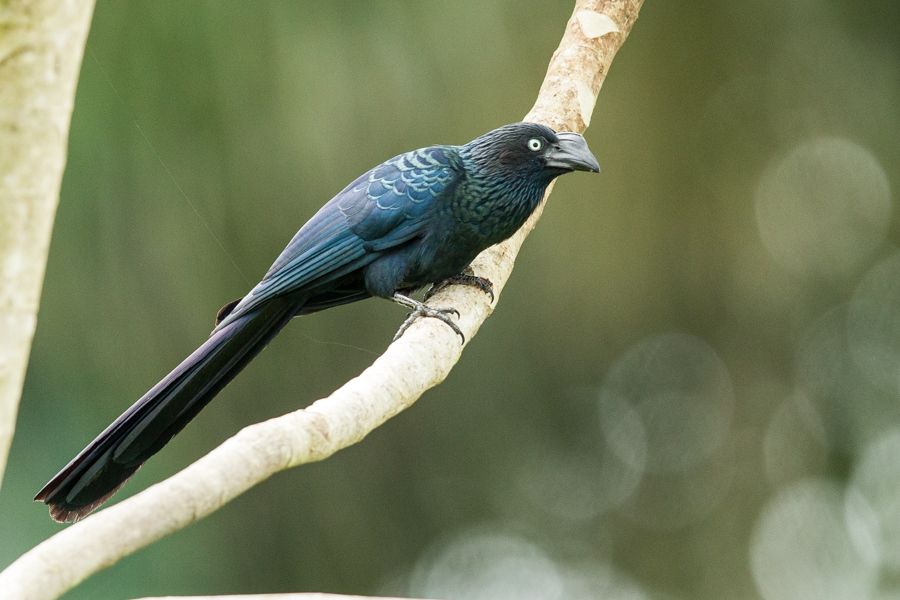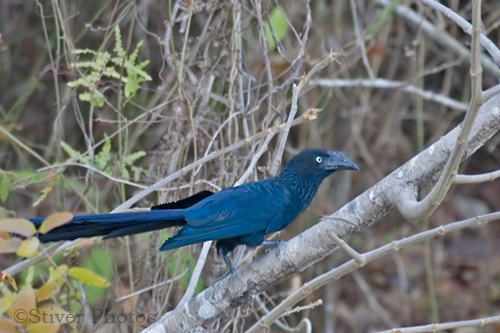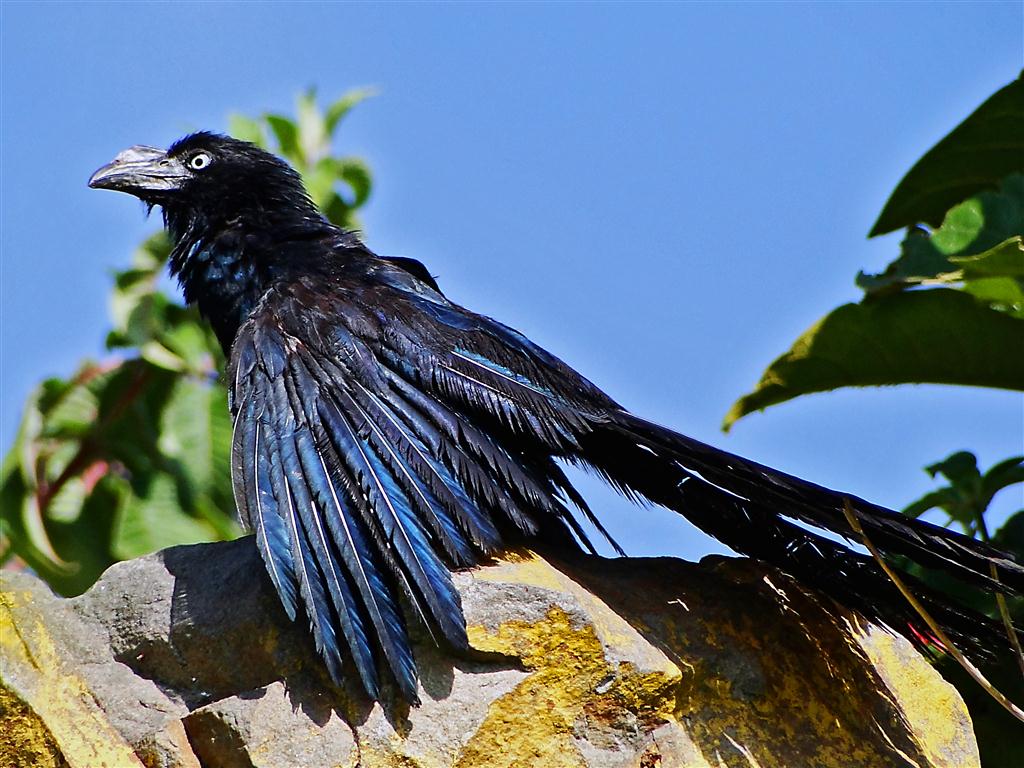
Crotophaga major
SUBFAMILY
Crotophaginae
TAXONOMY
Crotophaga major J. F. Gmelin, 1788, Cayenne. Monotypic.
OTHER COMMON NAMES
French: Ani des palиtuviers; German: Riesenani, Spanish: Garrapatero
Mayor.
PHYSICAL CHARACTERISTICS
18.1 in (46 cm); male 5.7 oz (162 g), female 5.1 oz (145 g). Glossy
blue-black, long tails, bill arched and laterally compressed.
DISTRIBUTION
Central and South America.
HABITAT
Tropical evergreen forest, pastures, marshes, mangroves.
BEHAVIOR
Resident with local movements. Group-living, defend territories.
FEEDING ECOLOGY AND DIET
Mainly insects, also lizards, seeds, fruits, and berries.
REPRODUCTIVE BIOLOGY
Cooperative breeders, nesting in loose colonies. Socially
monogamous. Nests are a bulky platform of sticks. Lay 2–5
eggs.
CONSERVATION STATUS
Not threatened.
SIGNIFICANCE TO HUMANS
None known.
Photo Gallery of - Greater ani




 Animalia Life
Animalia Life